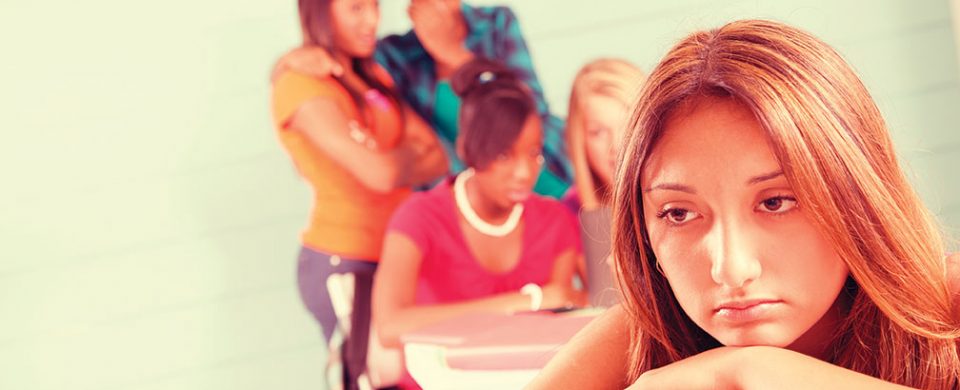“It’s all fun and games until someone posts a video…”
by Dr. Susan Sugerman and Sierra Sanchez, MSSW | Contributors
The anxiety about where to sit at lunch on the first day of school is enough to turn the stomachs of kids and parents alike. It’s bad enough for those in or around the “popular” groups, but imagine how hard it can be for kids who have been picked on or made fun of by their own peers. For many of us, bullying was probably limited to the school day, however our children are growing up in a digital world where they face the threat of harassment 24/7.
Can we pass it off as “kids will be kids?”
It is not uncommon for children and adolescents, still struggling to find their own identity and acceptance, to unintentionally hurt the feelings of others. However, bullying is different; bullying happens when aggressive verbal, physical, or social behavior is used repeatedly and intentionally to hurt someone else, often by damaging a victim’s self-esteem, social status, and especially their relationships with other people. Unfortunately, bullying now includes actions not only in the physical world, but also in the virtual world.
Who are the bullies?
Contrary to popular belief, bullies are not always kids from damaged homes with poor role models and low self-esteem (though this is sometimes true). They are typically children who have a strong need to get their own way, feel comfortable using power to do so, and lack empathy for others. They may or may not be popular, but they always have the support of at least a small group of peers. They are both boys and girls, although they express their aggression in different ways: boys more overtly and physically and girls more subtly and socially.
Who gets bullied?
Someone who appears more anxious and vulnerable is more likely to be bullied, especially if they lack a core of peers to back them up. The victims tend to be less prone to violence and have a mature understanding of the need to resolve conflict with dialogue rather than violence. These mature values are often exploited by the bullies.
Who are the “other” parties involved?
These people are the Bystanders. They are the “assistants” to the bully (intentionally or unintentionally), the “kids in the middle” who feel helpless to intervene, and the “defenders” who know how to skillfully disrupt a bullying event and still maintain social credibility. Defenders are hard people to come by, especially in the developmental chaos of early adolescence.
Bullying is bad for everybody.
Victims are at risk for suicide, mood changes, and destructive behavior intended to be self-soothing. In addition to the more obvious social and emotional consequences for victims, bullying causes a sense of powerlessness in bystanders, and it impairs the genuine social skills of the aggressors. Since young people form their ideas of intimacy and relationships during this time, bullying has a deep impact on how they define roles for the future.
What can parents do about it?
Look for signs your child is being bullied. Don’t assume that irritable or acting-out behavior stems from “normal” adolescent moodiness. Find out what’s happening at school and in cyberspace. Protect your child by monitoring the use of technology (use limits to teach your child how to handle difficulties, not avoid them altogether). Recognize when your own child may be the bully. Notice if your child is manipulative, controlling, or denies responsibility for his or her actions. Train your child to be a defender. Model behavior that is accepting of differences in others, and teach your son or daughter how to intervene and support others in ways that minimize their own risk in a social situation. Don’t be afraid to seek help from school staff or other professionals.
Resources
Local Nonprofit
Grant Halliburton Foundation | granthalliburton.org
Useful Websites
samhsa.gov/tribal-ttac/resources/bullying-prevention


